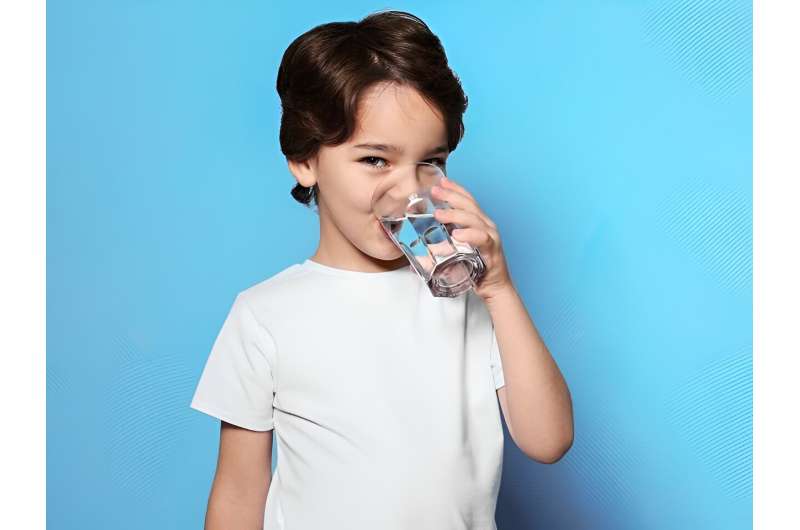This article has been reviewed according to Science X's editorial process and policies. Editors have highlighted the following attributes while ensuring the content's credibility:
fact-checked
peer-reviewed publication
reputable news agency
proofread
Some schools respond to child obesity by focusing on water

In the midst of a childhood obesity epidemic, a new study is pointing to a way to help school kids maintain a healthier weight: clean, accessible drinking water.
The decidedly low-tech solution emerged in a study of 18 California elementary schools that serve largely low-income minority families. Researchers found that when they kicked off a "Water First" program—which included putting tap water stations in the schools—it made a difference in kids' weight gain.
At the nine schools where the program launched, the percentage of kids who fell into the overweight category held fairly steady over 15 months. In contrast, that figure rose by almost 4 percentage points at schools without the water program.
Experts said the impact was striking, given that encouraging kids to drink water is just one simple step.
"I think the fact that they were able to find this difference is pretty remarkable," said Marlene Schwartz, director of the Rudd Center for Food Policy and Obesity at the University of Connecticut.
It's generally tough to move the needle when it comes to kids' weight, because it is influenced by so many factors, noted Schwartz, who was not involved in the study.
Dr. Anisha Patel, who led the research, pointed to the relative simplicity of the tactic—which could have multiple benefits, including cavity prevention and keeping kids hydrated and better able to learn.
"I think this is something school administrators can get behind," said Patel, a professor of pediatrics at Stanford University.
The study—published Aug. 7 in Pediatrics—actually got its inspiration from a group of middle-school students. Back in 2006, Patel was working in Los Angeles public schools to gather ideas for new programming to address childhood obesity.
That was when some students approached her and volunteered something on their wish list: more drinking water.
At that time, many California public schools lacked free drinking water, even in cafeterias. Bottled water was available to buy, but it was on display with soda, juice and other sugar-laden beverages. (It is now federal law, Schwartz said, that school cafeterias supply free drinking water during meal periods, and sugary drinks are banned.)
Spurred by the students' request, Patel and her colleagues went to work and eventually launched the Water First study: The idea was to provide free drinking water stations not only in cafeterias, but also playgrounds and other "high-traffic" areas in schools. The tap water was tested for lead to ensure its safety.
The program also involved promotion: signs around the schools, a "kickoff" assembly and other tactics to encourage kids to drink water.
The new study involved 18 northern California elementary schools, nine of which were randomly assigned to implement the water program. The other half served as a comparison group.
After 15 months, there was a notable difference in the prevalence of overweight at the schools. At schools that launched the water program, the percentage of students with a body mass index (BMI) that fell into the overweight category remained fairly steady—increasing from 49.5% to 50%. (BMI is an estimate of body fat based on height and weight.)
That was in contrast to the comparison schools, where that figure rose from 47.7% to 51.4%—just shy of 4 percentage points.
Based on food diaries that families kept, children at schools with the water program did reduce their overall intake of sugary drinks—though that effect was waning by the 15-month point. And there was no impact on the percentage of students whose BMI fell into the obesity range.
That's not surprising, however, Patel said, since it would be very difficult to make a dent in obesity prevalence with just one intervention.
But the findings do highlight a simple way for schools to make a difference not only in kids' weight gain, but overall well-being, both Patel and Schwartz said.
"I personally think that access to clean, safe and palatable water is a minimum standard that schools can meet," Schwartz said. "There's no question that when it comes to a beverage that you have throughout the day, water is the best choice."
For parents, she added, the findings also counter the idea that kids turn their noses up at "boring" water.
"Your child will drink plain water if that's what you give them," Schwartz said.
More information: The U.S. Centers for Disease Control and Prevention has tips for helping kids maintain a healthy weight.
Copyright © 2023 HealthDay. All rights reserved.


















